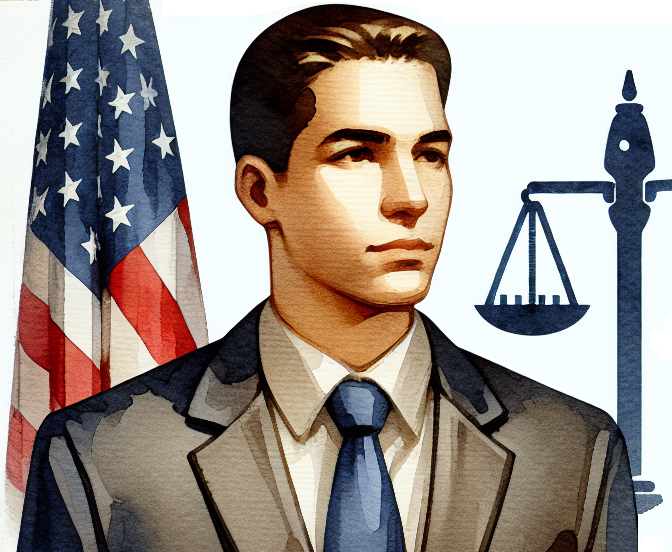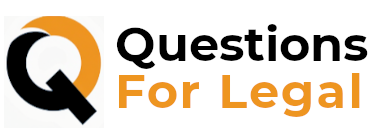Workplace harassment and discrimination are issues that have garnered significant attention in recent years, and for good reason. They represent not only an affront to the principles of fairness and equality but also a serious threat to the well-being and productivity of employees.
Table of Contents
- Defining Workplace Harassment
- Defining Workplace Discrimination
- Understanding Workplace Harassment and Discrimination
- Legal Framework
- Taking Action Against Harassment and Discrimination
- Suing for Harassment or Discrimination
- Potential Outcomes and Remedies
- Challenges and Considerations
- Final Thoughts
Defining Workplace Harassment
Workplace harassment is a term that encompasses a wide range of unwelcome behaviors or actions directed towards an individual or group of individuals based on their protected characteristics. These behaviors can be verbal, physical, or psychological in nature and create a hostile or intimidating work environment. Common forms of workplace harassment include sexual harassment, racial harassment, and gender-based harassment. It’s essential to note that harassment can take many forms and is not limited to these examples.
Defining Workplace Discrimination
Workplace discrimination, on the other hand, occurs when an employee is treated unfairly or unequally based on their protected characteristics, such as age, disability, religion, or other legally recognized traits. Discrimination can manifest in various ways, such as in hiring, firing, promotions, pay, or job assignments. Both harassment and discrimination violate federal and state laws, which exist to protect employees from such mistreatment.
Understanding Workplace Harassment and Discrimination
In today’s diverse and interconnected workplaces, it’s crucial to recognize and understand the various forms of workplace harassment and discrimination that can undermine the well-being and productivity of employees. By being aware of these issues, we can better equip ourselves to combat them and foster inclusive environments where every individual is treated with respect and fairness.
Types of Workplace Harassment
- Sexual Harassment:Sexual harassment is perhaps one of the most well-known forms of workplace harassment. It involves unwelcome advances, comments, or actions of a sexual nature that create a hostile or intimidating work environment. These behaviors can range from inappropriate jokes and comments to more severe forms like unwanted physical contact or explicit messages.It’s important to recognize that sexual harassment can happen to anyone, regardless of their gender. Both men and women can be victims, and it can occur between colleagues, supervisors, or even clients. Understanding the nuances of sexual harassment is essential for preventing and addressing it effectively.
- Racial Harassment:Racial harassment targets individuals based on their race, ethnicity, or nationality. It can take various forms, including racial slurs, offensive comments, racial stereotypes, or exclusion based on one’s racial background. This type of harassment not only creates a hostile work environment but also perpetuates harmful stereotypes and divisions among coworkers.Racial harassment can be insidious, often manifesting through microaggressions—subtle, indirect, or unintentional acts of discrimination. By recognizing these behaviors, employees and employers can work together to promote a more inclusive workplace culture.
- Gender-Based Harassment:Gender-based harassment occurs when individuals are targeted because of their gender identity or expression. This can include derogatory comments, offensive jokes, or discriminatory practices aimed at individuals who do not conform to traditional gender roles or norms.It’s crucial to understand that gender-based harassment extends beyond the binary concept of male and female and encompasses transgender and non-binary individuals as well. Fostering a workplace culture that respects and supports diverse gender identities is essential for creating an inclusive environment.
Types of Workplace Discrimination
- Age Discrimination:Age discrimination occurs when employees are treated unfairly based on their age, typically with a focus on older individuals. This can manifest in various ways, such as the denial of job opportunities, promotions, or training based on stereotypes or biases related to age. Age discrimination is particularly concerning as it can lead to the exclusion of experienced and valuable employees from the workforce.
- Disability Discrimination:Disability discrimination targets individuals with disabilities, whether visible or invisible. It involves treating them unfairly or denying them reasonable accommodations needed to perform their job effectively. This form of discrimination can hinder the career growth and opportunities of individuals who have the skills and qualifications but face barriers due to their disabilities.
- Religious Discrimination:Religious discrimination occurs when employees are subjected to adverse treatment because of their religious beliefs or practices. It can involve refusal to accommodate religious practices, derogatory comments about one’s faith, or exclusion from workplace activities based on religion. Respecting employees’ religious diversity is not only a legal requirement but also a fundamental aspect of promoting inclusivity.
Legal Framework
When it comes to addressing workplace harassment and discrimination, knowledge of the legal framework is paramount. Understanding the laws that protect employees’ rights and the agencies responsible for enforcing these laws is essential.
Federal Laws Governing Workplace Harassment and Discrimination
- Title VII of the Civil Rights Act of 1964:Title VII is a landmark federal law that prohibits discrimination in employment on the basis of race, color, religion, sex, and national origin. This legislation is wide-reaching and applies to most employers with 15 or more employees. It encompasses protections against various forms of harassment and discrimination, including racial, religious, and gender-based harassment.Under Title VII, employers are required to provide a workplace free from harassment and discrimination, and they can be held liable for failing to take appropriate corrective actions when incidents occur. This law has been instrumental in combating workplace discrimination for decades.
- Americans with Disabilities Act (ADA):The ADA is another crucial federal law that prohibits discrimination against individuals with disabilities in employment, public services, and places of public accommodation. In the context of the workplace, the ADA requires employers to provide reasonable accommodations to qualified employees with disabilities, ensuring they can perform essential job functions.The ADA also addresses disability-based harassment and ensures that individuals with disabilities are not subjected to hostile work environments or discriminatory treatment because of their disabilities.
- Age Discrimination in Employment Act (ADEA):The ADEA safeguards individuals aged 40 and older from age-based discrimination in the workplace. It prohibits discriminatory practices related to hiring, firing, promotions, and other employment decisions based on an individual’s age. The ADEA recognizes the value and experience that older workers bring to the workforce and seeks to protect their rights.
State Laws and Regulations:
In addition to federal laws, many states have their own anti-discrimination and anti-harassment laws that provide additional protections and remedies for employees. These state laws can cover a broader range of characteristics or provide more stringent requirements for employers. It’s essential for employees and employers to be aware of both federal and state laws that apply to their specific circumstances.
C. The Role of the Equal Employment Opportunity Commission (EEOC):
The EEOC is a federal agency responsible for enforcing anti-discrimination laws in the workplace. Its role is to investigate complaints of discrimination, mediate disputes, and, if necessary, file lawsuits on behalf of employees. The EEOC plays a vital role in ensuring that workplace harassment and discrimination are effectively addressed and that employees’ rights are protected.
When individuals believe they have experienced workplace harassment or discrimination, they can file a complaint with the EEOC, which will investigate the matter and take appropriate action to resolve the issue. The EEOC’s involvement provides an additional layer of protection for employees seeking justice.
Taking Action Against Harassment and Discrimination
Identifying and Documenting Incidents
The first step in addressing workplace harassment and discrimination is to recognize when it’s occurring. These incidents may not always be overt or easy to identify, so it’s crucial to be vigilant. Here are some tips:
- Educate Yourself: Familiarize yourself with the types of harassment and discrimination discussed earlier in this blog post. Understanding what constitutes these behaviors is essential for recognizing them.
- Trust Your Instincts: If something feels wrong or makes you uncomfortable, it’s worth investigating further. Trust your instincts and feelings about the situation.
- Document Everything: If you witness or experience harassment or discrimination, document every incident meticulously. Note dates, times, locations, people involved, and what was said or done. Keep emails, text messages, or any other written communications related to the incident.
Reporting Harassment and Discrimination
Once you’ve identified and documented incidents, the next step is to report them to the appropriate authorities. Reporting can be a challenging but necessary process. Here’s what you should consider:
- Follow Company Procedures: Review your company’s policies and procedures for reporting harassment and discrimination. Employers are legally required to have mechanisms in place for addressing these issues.
- Speak to a Supervisor or Manager: In many cases, the first point of contact for reporting issues is your immediate supervisor or manager. Provide them with the information you’ve documented.
- Contact HR or a Designated Officer: If you’re uncomfortable speaking with your supervisor or if they are involved in the issue, contact your Human Resources (HR) department or a designated officer responsible for handling such complaints.
- File a Complaint with the EEOC: If internal processes don’t yield satisfactory results, you can file a complaint with the Equal Employment Opportunity Commission (EEOC) as mentioned in the previous section. They will investigate the matter and take appropriate action.
Employer’s Responsibility in Addressing Complaints
Employers have a legal obligation to address harassment and discrimination complaints promptly and effectively. Here’s what employers should do:
- Conduct Thorough Investigations: Upon receiving a complaint, employers should initiate a thorough and impartial investigation to determine the veracity of the claims. This often involves interviewing witnesses and reviewing evidence.
- Take Appropriate Action: If the investigation reveals that harassment or discrimination occurred, employers must take appropriate action to remedy the situation. This may include disciplinary measures, training, or policy changes.
- Prevent Retaliation: Employers must also ensure that individuals who report harassment or discrimination do not face retaliation. Retaliation can take many forms, such as demotion, termination, or hostile work environments.
The Role of HR Departments
HR departments play a critical role in addressing workplace harassment and discrimination. They are often the initial point of contact for employees facing these issues. HR should:
- Maintain Confidentiality: HR departments should handle complaints with utmost confidentiality to protect the privacy of individuals involved.
- Provide Support: HR should offer support to employees throughout the process, including information on their rights and available resources.
- Coordinate Training: HR can play a proactive role in preventing harassment and discrimination by coordinating training programs and workshops for employees and management.
Potential Retaliation Concerns
One significant concern when addressing harassment and discrimination is the potential for retaliation. Retaliation occurs when individuals who report these issues face adverse actions in response. To protect yourself:
- Know Your Rights: Understand that retaliation is illegal, and you have the right to report it if you experience it.
- Document Retaliation: If you believe you’re experiencing retaliation, document these incidents just as you would with harassment or discrimination.
- Seek Legal Advice: If retaliation persists, consult with an attorney who specializes in employment law. They can provide guidance on pursuing legal action against your employer.
Suing for Harassment or Discrimination
When all else fails in addressing workplace harassment or discrimination, taking legal action may become a necessary step towards justice and resolution.
When Legal Action Becomes Necessary
Legal action should be considered when other avenues of addressing harassment or discrimination have not yielded satisfactory results. Some situations in which legal action may become necessary include:
- Persistent Harassment or Discrimination: If the harassment or discrimination continues despite reporting it to your employer and HR, legal action may be the next step.
- Retaliation: If you experience retaliation for reporting harassment or discrimination, it’s essential to protect your rights by pursuing legal action.
- Inaction by the Employer: If your employer fails to take appropriate action to address your complaint, it may be necessary to escalate the matter through legal means.
- Severe or Pervasive Harassment: In cases of severe or pervasive harassment that has a significant impact on your well-being and work performance, legal action can be a means of seeking compensation and justice.
The Process of Filing a Lawsuit
Filing a lawsuit is a structured legal process that involves several steps:
- Consultation with an Attorney: Your first step is to consult with an attorney who specializes in employment law. They will evaluate your case and advise you on whether you have a valid claim.
- Filing a Complaint: If you decide to proceed, your attorney will file a formal complaint with the appropriate court. This document outlines the details of your case, the alleged harassment or discrimination, and the relief you seek.
- Discovery: During the discovery phase, both parties gather evidence, including documents, witness statements, and depositions. This process is critical for building a strong case.
- Negotiation and Settlement: Many cases are resolved through negotiation and settlement discussions. Your attorney will represent your interests during these negotiations.
- Trial: If a settlement cannot be reached, the case will proceed to trial. At trial, both sides present their evidence and arguments to a judge or jury, who will make a final decision.
Building a Strong Case
Building a strong case is essential to succeed in a lawsuit. Key elements of a strong case include:
- Documented Evidence: Thoroughly document all incidents related to harassment or discrimination. This includes emails, text messages, witness statements, and any relevant policies or procedures.
- Witnesses: Identify and interview witnesses who can corroborate your claims or provide valuable testimony.
- Expert Witnesses: Depending on the nature of your case, you may need expert witnesses, such as psychologists or industry experts, to testify on your behalf.
- Legal Expertise: Work closely with an experienced employment law attorney who can guide you through the legal process and ensure that your case is well-prepared.
Hiring an Attorney
Hiring an attorney experienced in employment law is crucial when pursuing a lawsuit for harassment or discrimination. An attorney can:
- Assess the Strength of Your Case: An attorney can evaluate the merits of your case and provide an honest assessment of your chances of success.
- Navigate Complex Legal Processes: Employment law can be complex, and an attorney can guide you through the legal process, ensuring that you meet all deadlines and requirements.
- Negotiate on Your Behalf: Attorneys are skilled negotiators and can work to secure a fair settlement on your behalf.
- Represent You in Court: If your case goes to trial, an attorney will represent your interests and present your case effectively.
Mediation and Alternative Dispute Resolution
Before proceeding to trial, many cases are resolved through mediation or alternative dispute resolution (ADR) methods. Mediation involves a neutral third party who helps facilitate negotiations between the parties. ADR methods can save time and money compared to a full trial and can lead to mutually acceptable resolutions.
Potential Outcomes and Remedies
Compensation for Damages
One of the primary goals of pursuing a lawsuit for workplace harassment or discrimination is to seek compensation for the damages suffered. These damages can encompass various elements, including:
- Economic Damages: This includes any financial losses you’ve incurred due to the harassment or discrimination, such as lost wages, benefits, or out-of-pocket expenses.
- Emotional Distress Damages: Emotional distress damages compensate for the emotional pain, suffering, and trauma caused by the harassment or discrimination. These damages can vary widely based on the severity and impact of the harassment.
- Punitive Damages: In some cases, punitive damages may be awarded to punish the employer or wrongdoer for particularly egregious behavior. These damages are meant to deter future misconduct.
Reinstatement or Promotion
In cases where an employee has been wrongfully terminated or denied a promotion due to harassment or discrimination, a successful lawsuit may result in reinstatement to their former position or promotion to the position they were wrongfully denied. This remedy not only provides justice but also restores the employee’s career trajectory.
Policy Changes within the Workplace
A successful lawsuit can lead to changes in workplace policies and procedures aimed at preventing future harassment or discrimination. Employers may be required to implement or strengthen anti-harassment and anti-discrimination policies, conduct regular training, and establish more robust reporting mechanisms.
Impact on the Accused Party
While the focus is often on remedies for the victim, the accused party can also face consequences. If the accused is found responsible for harassment or discrimination, they may face disciplinary actions, including suspension or termination, depending on the severity of their actions. Employers have a responsibility to address wrongdoing within their organization.
Settlement Agreements
Many harassment and discrimination cases are resolved through settlement agreements before they go to trial. These agreements involve negotiations between the parties and may include a financial settlement, confidentiality agreements, and non-disparagement clauses. Settlements can provide a quicker resolution to the matter and allow both parties to avoid the time and expense of a trial.
It’s important to note that the specific outcomes and remedies in any given case can vary significantly based on the circumstances, the strength of the evidence, and the legal strategies employed. Consulting with an experienced employment law attorney is crucial to understanding your rights and pursuing the most appropriate remedies for your situation.
Challenges and Considerations
Statute of Limitations
One crucial consideration when pursuing legal action is the statute of limitations, which refers to the timeframe within which a lawsuit must be filed. Each type of harassment or discrimination claim may have different deadlines, and these deadlines can vary by jurisdiction. It’s essential to consult with an attorney to determine whether your claim falls within the applicable statute of limitations.
Burden of Proof
In legal proceedings, the burden of proof lies with the party making the allegations—in this case, the plaintiff. This means you must provide sufficient evidence to support your claims. The level of proof required can be challenging to meet, as you’ll need to demonstrate that the harassment or discrimination occurred to the satisfaction of the court or jury.
Confidentiality and Privacy Concerns
Legal action can bring your personal and professional life into the public domain. Court proceedings and legal documents are generally a matter of public record, which means that details of your case may become publicly accessible. Additionally, parties involved may be required to testify or provide evidence, which can be emotionally taxing and invasive.
Costs and Time Involved
Pursuing a lawsuit can be expensive and time-consuming. Legal fees, court costs, and other expenses can add up quickly. Lawsuits can also take months or even years to resolve, and the process can be emotionally draining. It’s important to weigh the potential benefits against the financial and emotional costs.
Emotional Toll on the Plaintiff
The emotional toll of reliving traumatic experiences or facing hostile parties in court can be significant. The stress and anxiety associated with litigation can affect your well-being and personal life. It’s essential to have a support system in place, including friends, family, and potentially mental health professionals, to help you cope with the emotional challenges.
Despite these challenges, pursuing legal action can be a necessary step to seek justice and bring about change in your workplace. It’s important to approach the decision thoughtfully and consult with an experienced employment law attorney who can provide guidance and support throughout the process.
Remember that you’re not alone. There are resources and organizations dedicated to helping individuals facing workplace harassment or discrimination. These organizations can provide information, support, and guidance to help you navigate the challenges and considerations associated with legal action.
Final Thoughts
In conclusion, addressing workplace harassment and discrimination is an essential step toward creating safer and more inclusive workplaces. Your voice matters, and your pursuit of justice can make a significant difference. Remember that there are resources and support available to assist you on your journey towards justice and change.

An accomplished defense lawyer who, after hours of navigating the complexities of the legal system, enjoys spending free time honing his marksmanship skills at the shooting range.





